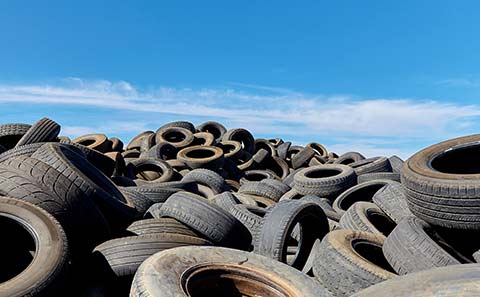Owners, for instance, put low-rolling-resistance tires on their vehicles to squeeze more miles from a gallon of gasoline. And they work, especially if drivers don’t apply a lead foot to the accelerator pedal.

Manufacturers and vehicle owners are doing all sorts of things to improve fuel mileage. Manufacturers have done plenty, in addition to specifying tires with low rolling resistance. Carmakers have developed hybrids, which combine gasoline and electricity for dramatically better mileage in urban driving. They also have gone to smaller engines, which tend to get better mileage. But smaller engines usually are weaker, all things being equal, so manufacturers added multi-valve cylinder heads and turbochargers to boost power.
Then manufacturers added gasoline direct injection or GDI. Direct injection is more efficient, so power again increased and so did mileage. Direct injection, however, increased something else: carbon buildup on valves.
Gasoline Direct Injection Problem
Overtime—often beyond 65,000 miles—GDI engines start to lose power and fuel economy. That’s because the carbon on the valves builds up to the point where it interferes with airflow and valve actuation.
Cleaning valves in DGI engines is neither easy nor cheap.
When cars were carbureted or had traditional fuel injectors, cleaning engine valves was simple. In those vehicles, gasoline was drawn or sprayed into the cylinders past the intake valves. Gasoline is a solvent, so the valves remained fairly clean—at least if the gasoline was decent and not a no-name alternative with no detergent additives. Changing engine oil and the filter on a manufacturer-recommended schedule, or even more frequently, also helped to keep valves clean.
Then there was the solution humorously labeled the “Italian tuneup”: Take a long trip at high speed—preferably with fuel additives poured into the tank—to clean off deposits.
Now it’s not so easy. Direct-injection engines can get carbon buildup on valves even with good gasoline and regular oil and filter changes, and fuel system cleaners don’t reach the valves because they are not sprayed over them as on earlier engines.
Preventing Carbon Deposits
There aren’t too many preventive things you can do. Good gasoline and regular oil and filter changes will help but don’t prevent carbon deposits in GDI vehicles.

One possible solution is a catch can. It reroutes the positive crankcase ventilation (PCV) system, sending excess exhaust gases from inside the engine through the can to catch some waste before the filtered vapors head back into the engine to be burned again. Catch cans must be emptied periodically. Catch can kits are widely available for turbocharged Volkswagens, which are notorious for building carbon deposits on valves, and for Ford Ecoboost engines.
One thing that helps, but only if you get rid of your older GDI vehicle and purchase a new one, is a direct gasoline injection system that places a second, small injector above the valves. The second injector, operated by a computer, cleans the valves, preventing carbon buildup, while the direct injector boosts power. Toyota and Ford offer this system in some models.
Manually Removing Carbon Deposits
If your GDI engine experiences cold-start misfires, get sluggish, runs rough, or loses fuel economy, and a small camera that snakes into the spark plug cavity shows heavy carbon buildup on the valves, the carbon deposits must be removed.
Fuel additives, like quality gasoline, don’t really remove carbon from valves on GDI engines, mechanics say, because it’s in the fuel, and the fuel doesn’t touch the valves.
That leaves manual removal, and that’s best left to a mechanic. He may chip away carbon with a screwdriver or other tool, blast deposits off with ground walnut shells (softer than sand), or use a computerized chemical cleaning system. Costs may hit the $700 range.
And if your GDI vehicle runs fine? Do nothing.


